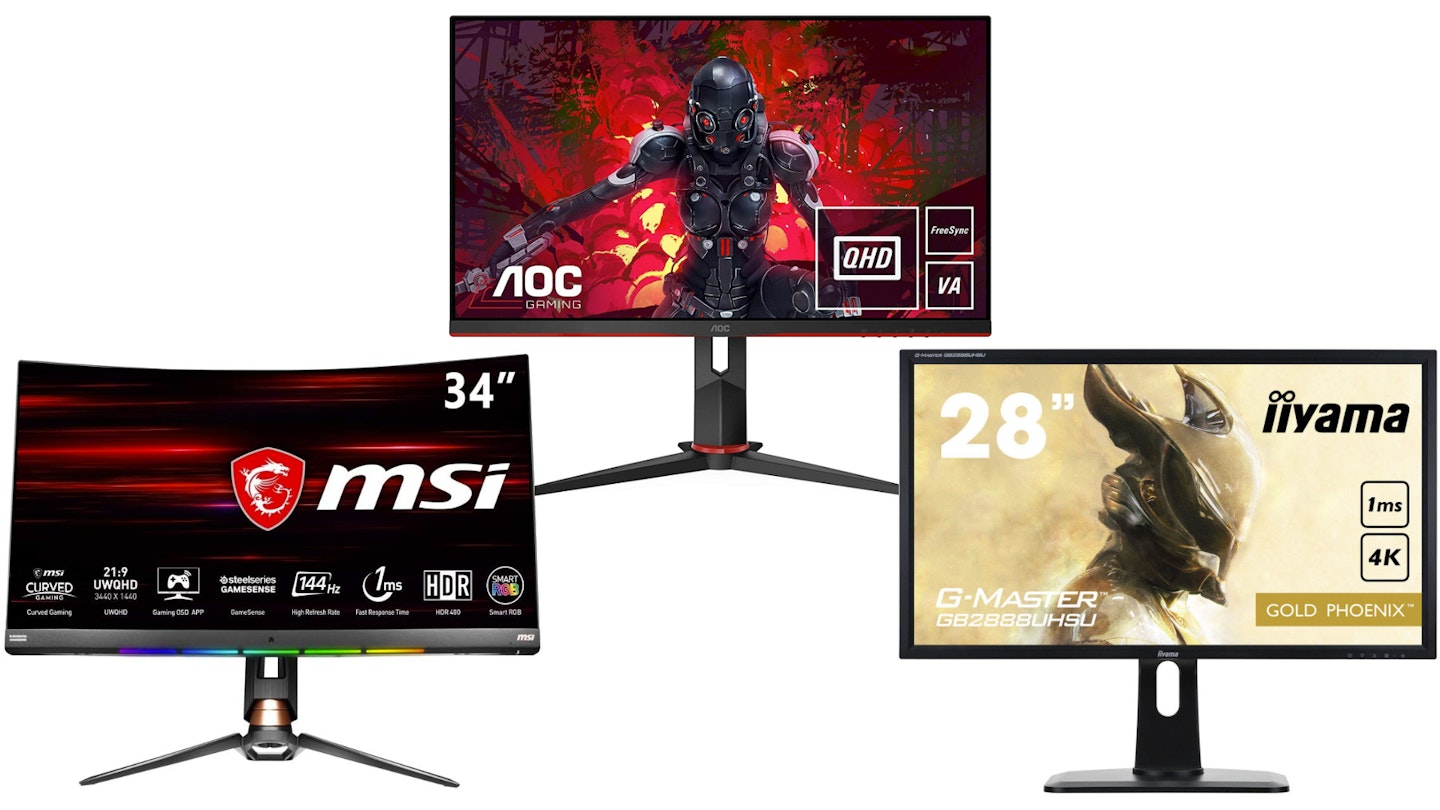It’s time to get the most out of your hardware with the best gaming monitors available. A dedicated gaming monitor isn’t just a standard PC screen with some racing stripes and fancy acronyms attached. It’s a technologically impressive device designed to let a GPU flex its powers and rid your session of dull shadows, overbearing whites, stutters and tears, all while giving you the tactical edge and an opportunity to appreciate the beauty of video games.
It’s quickly becoming the case that gaming monitors aren’t just the preserve of PC gamers. Console players are turning to the tech, recognising that specialist refresh rates and response times outstrip those offered by televisions at a significantly more affordable price point. This is particularly true with the new generation of consoles, with the PlayStation 5 and Xbox Series X supporting 120Hz and 4K UHD.
We’ve rounded up the very best gaming monitors below.
What we look for in the best gaming monitors:
Resolution
HD, QHD, UWQHD and 4K UHD. These terms all relate to the same thing: resolution. Resolution is the number of pixels a screen has, and the more there are, the more precise an image will be. Though important, it’s not simply the case that higher resolutions are better. In addition to CPU, RAM and GPU hardware considerations, the quality of an image is determined by refresh rate, response time and panel type.
Refresh Rate
It’s easiest to think of refresh rates as being to monitors what frames per second is to film. The higher the refresh rate, the smoother the image – low refresh rates can make fast-paced content appear to stutter and jolt. The refresh rate is measured in Hertz (Hz).
144Hz is a popular count for gaming, refreshing 144 times per second. When coupled with a capable GPU, the refresh rate results in a very smooth image. Due to the varying capabilities of interface connections, 144Hz is typically limited to a maximum resolution of 1080p or 1440p. 4K UHD displays usually carry a maximum of 60Hz, which still provides a pleasantly smooth experience.
Response Time
Response time measures the speed at which a pixel can change colour. Measured in milliseconds (ms), gaming monitors typically sit under 5ms, with the very best clocking at 1ms. A response time works closely with the refresh rate to ensure that images are free from ghosting and blur. So, the lower the number, the better - especially for fast-paced games.
Panel
Not all LCD panels are created equal. There are three main types of panels used in the manufacture of monitors, each with its costs and benefits.
Twisted nematic (TN) panels are affordable and carry impressive response times and refresh rates. However, they often have limited colour depth and restrictive viewing angles.
In-plane switching (IPS) panels have arresting colour depths and wide viewing angles. This quality of image can sacrifice response time and price.
Vertical alignment (VA) panels have a large colour depth and viewing angle sitting between TN and IPS. On affordable options, the response times tend to be less than impressive. VA panels are commonly found in curved monitors. Here, the code 1800R is often attached - this references the depth of the curve. 1800R is considered the best for gaming.
Sync tech
Synchronising tech, such as FreeSync, G-Sync and Adaptive-Sync, matches a monitor’s refresh rate to that of the GPU. This synchronisation negates stutter and tear.
Just so you know, whilst we may receive a commission or other compensation from the links on this page, we never allow this to influence product selections.
The best gaming monitors
Best Gaming Monitors
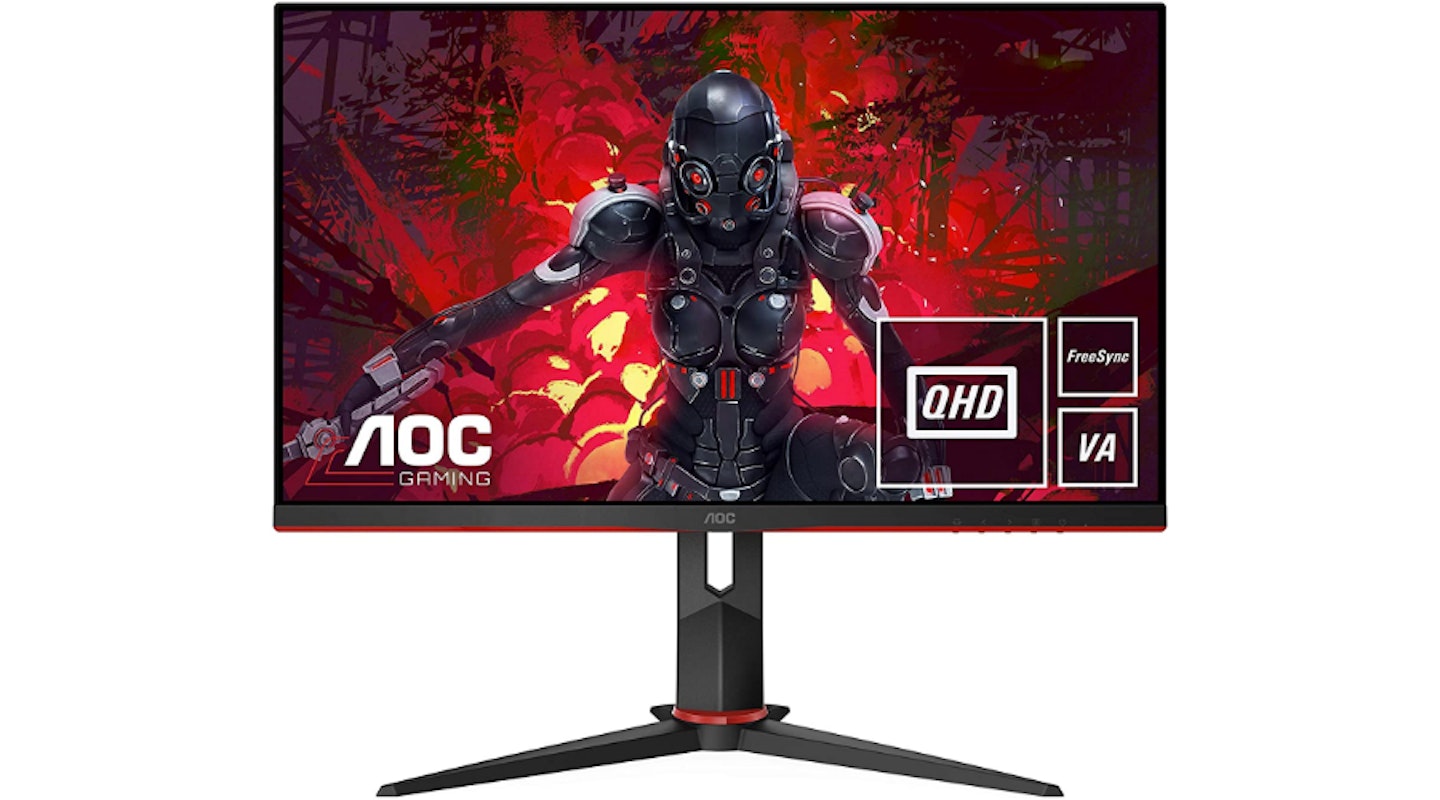 1 of 6
1 of 6AOC Q27G2U QHD
Best affordable gaming monitorThe AOC Q27G2U has all that a gamer could need. The 27-inch screen provides a whole lot of real estate, while the 1440p QHD resolution delivers a sharp and defined image. AMD FreeSync Premium and the 144Hz refresh rate allow graphics cards to flex and keep even the most chaotic games running smoothly. Ghosting is no issue due to the 1ms response time. The VA panel boasts an excellent 121% sRGB colour gamut too, providing a deep and vibrant image.Specifications: Screen: 27-inch LEDResolution: QHD 1440pPanel: VARefresh rate: 144HzResponse time: 1msSync technology: FreeSync PremiumConnections: HDMI 1.4 x 2, DP 1.2 x 1, USB 3.0 x 4, 3.5mm audio outAmazon.co.uk
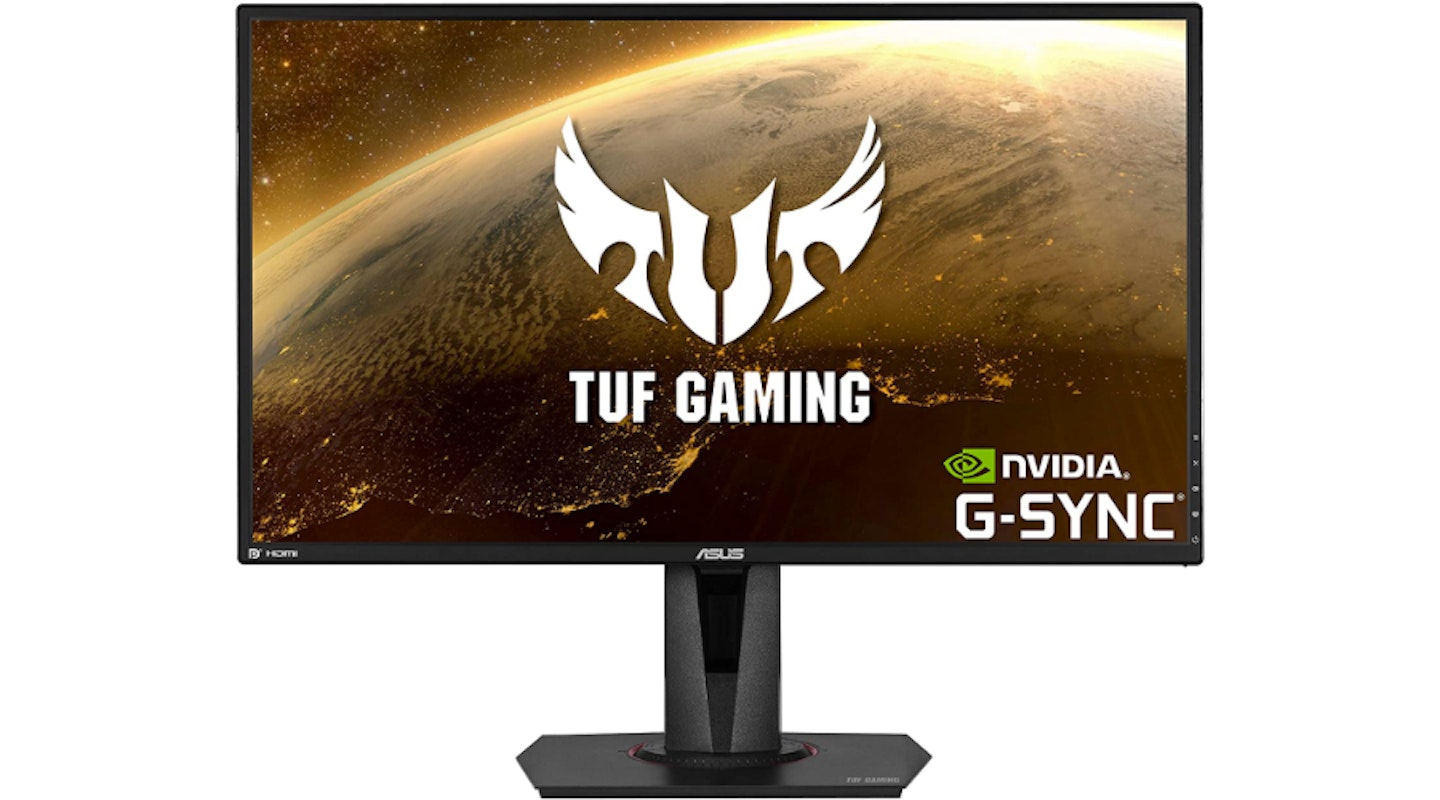 2 of 6
2 of 6Asus TUF VG27AQ QHD
Best 1440p refresh rates The Asus TUF VG27AQ is a monitor designed to showcase all that a powerful gaming PC can do, and expound once again the benefits of maximum fps at 1440p. With the backing of a powerful enough GPU, such as the RTX 2080 Ti, this monitor will shine with a 165Hz refresh rate. Asus's own Extreme Low Blur Sync (ELMB) is used to reduce tear and blur, while the IPS panel and HRD10 compatibility produce great contrast for a deep and engrossing visual experience. Specifications: Screen: 27-inch LEDResolution: QHD 1440pPanel: IPSRefresh rate: 165HzResponse time: 1msSync technology: Extreme Low Motion Blur SyncSpeakers: 2w x 2Connections: HDMI 2.0 x 2, DP 1.2 x 1, 3.5mm audio outAmazon.co.uk
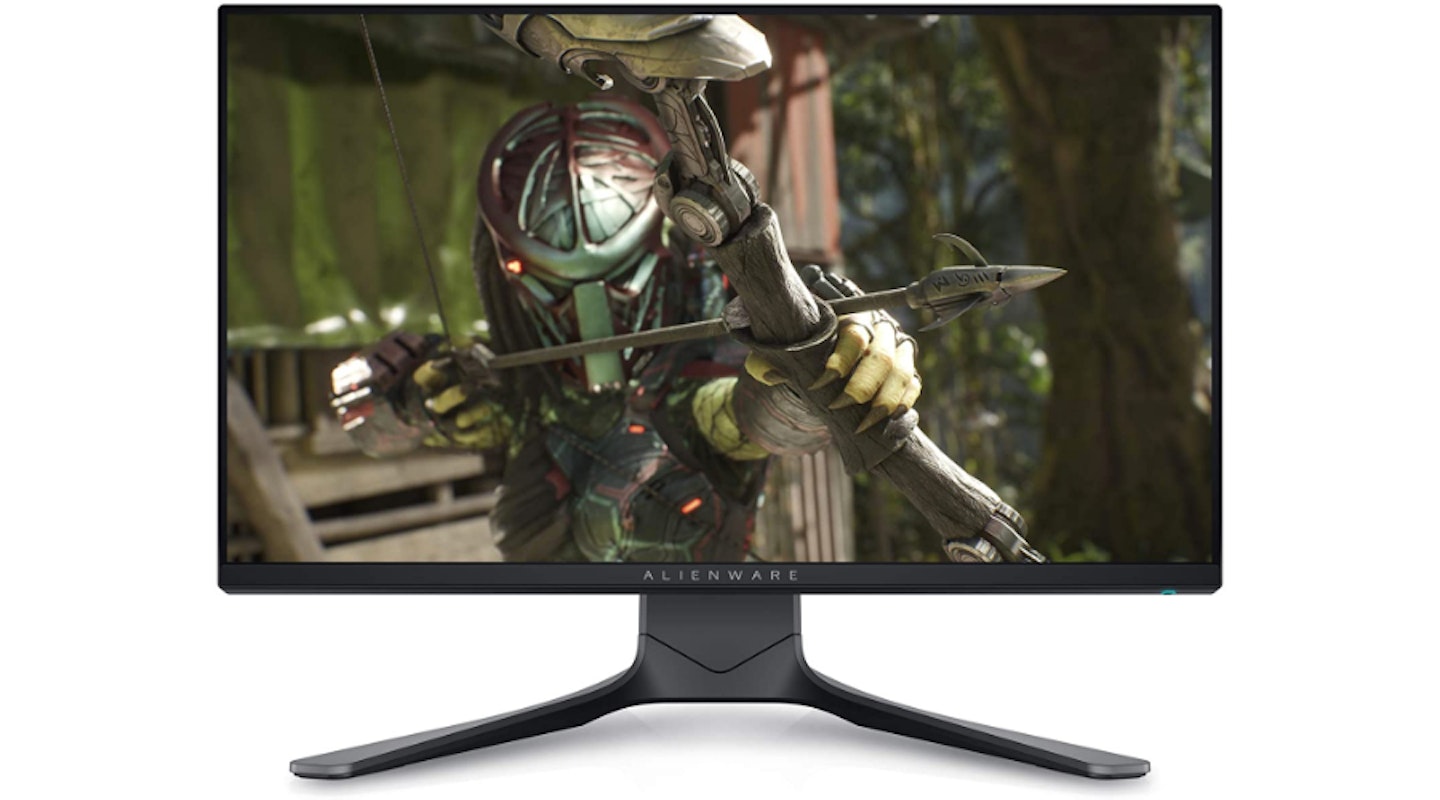 3 of 6
3 of 6Alienware AW2521HF
Best 240Hz gaming monitor240Hz is a significant refresh rate, pushing the bounds of what most gaming rigs can do. The ability to tab into this near-uncapped level of silky-smooth gameplay and blur-free action is exhilarating. The IPS panel provides an impressive depth to visual depth. Attention has been paid to the monitor's look, with bold steel framing and the tasteful incorporation of Alien RGB lighting. Though the screen is modest in size and resolution, the overall performance of this monitor is superb.Specifications: Screen size: 24.5-inch LEDResolution: FHD, 1920x1080pPanel: IPSRefresh rate: 240HzResponse time: 1msSync technology: FreeSync Premium, Nvidia G-SyncConnections: HDMI 2.0 x 2, DP 1.2 x 1, USB 3.0 x 2, 3.5mm audio outCurrys.co.uk
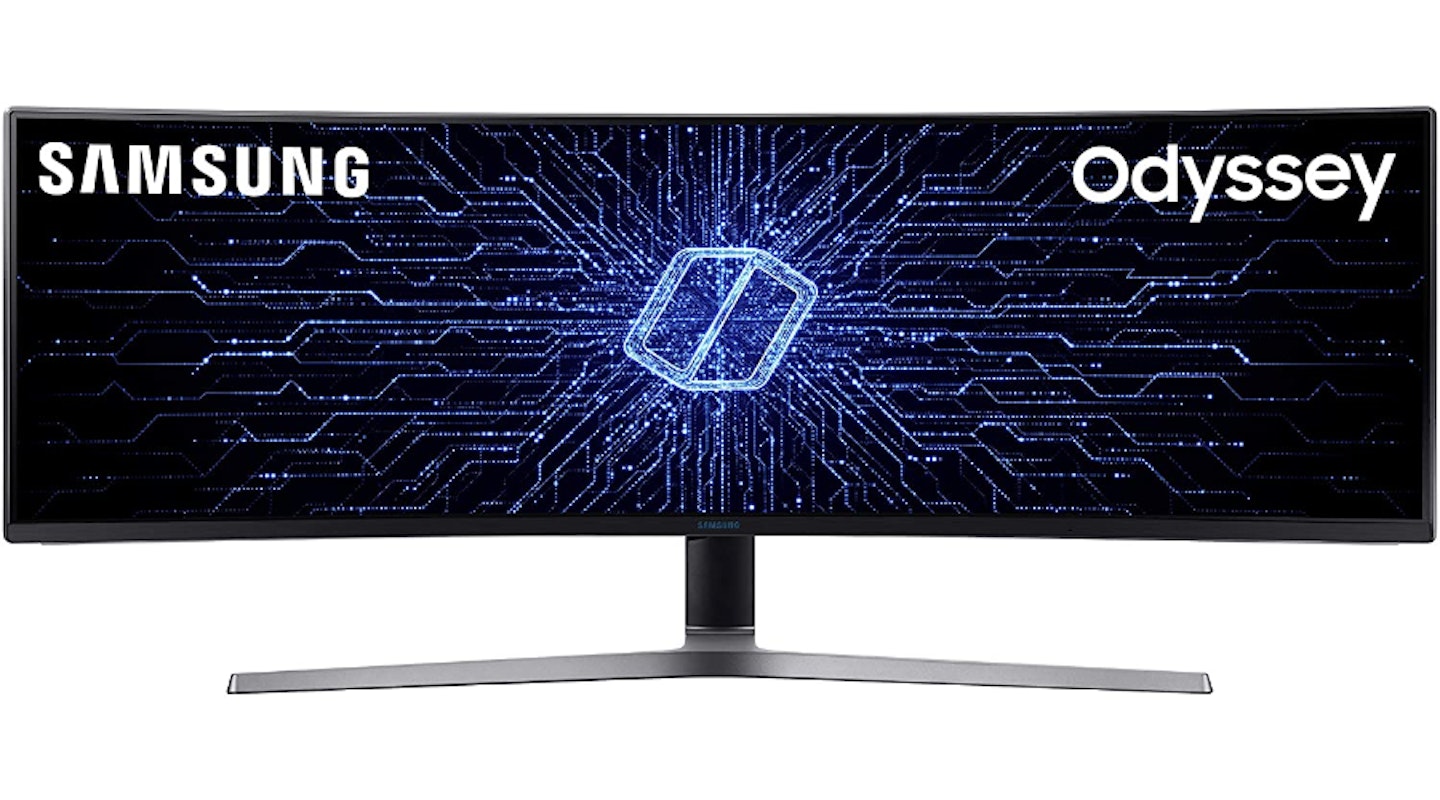 4 of 6
4 of 6Samsung CHG90 Curved UWHB
Best ultra-wide gaming monitorDual-monitor setups are great, but there's always some bezel or other breaking the illusion. No more with the Samsung CHG90, which at 49-inches wide provides enough on-screen real-estate for any game or task. The screen's 1800R curvature provides a heightened field of view for greater immersion, and Samsung's QLED tech adds a vibrant luminosity and HDR support to the VA panel for an improved visual experience. The on-screen dashboard is a welcome user-friendly touch, providing streamlined access to all of the monitor's settings, including refresh rate and black equalisation. Specifications
 5 of 6
5 of 6MSI Optix MPG341CQR UWQHD
Best gaming monitor featuresMSI wants gamers to have it all. The MPG341CQR's 34-inch 1800R curved screen delivers 1440p of resolution at 144Hz with a 1ms response time. HDR is onboard, adding more pop to the visual performance of the VA panel. An AI Night Vision mode is also available, adjusting the screen's gamma depending on in-game location. The desktop OSD app is versatile and much preferred over traditional OSDs. Every one of those features will be ticking many boxes, and the resulting performance is silky smooth and endlessly impressive, but that's not all. Small quality-of-life features include an underside mouse cable tidy, a webcam cradle, an LED lighting strip that changes colour to match the weather in the user's local area, and a small in-built cam for facial recognition. Specifications: Screen size: 34-inchResolution: Ultra-wide QHD, 3840x1440Panel: Curved 1800RRefresh rate: 144HzResponse time: 1msSync technology: FreeSyncConnections: HDMI 2.0 x 2, DP 1.4 x 1, USB-C x 1, USB 3.2 Type A x 3, USB 3.2 Type B x1, 3.5mm audio outAmazon.co.uk
 6 of 6
6 of 6Iiyama GB2888UHSU-B1 Gold Phoenix 4K UHD
Best 4K gaming monitor for consoles and PCThe Iiyama Gold Phoenix's big sell is that it's a 4K UHD gaming monitor at a bargain price. PC gamers wanting to see some 4K ray-tracing, or PS5 and Xbox Series X players looking for 60fps, it's time to pay attention. The 28-inch screen provides UHD at 60Hz, with a 1ms response time working to prevent any ghosting. It's all smooth, blur-free motion here. The payoff for the monitor's low price point is felt most with the TB panel, which is a little lacklustre with colour representation. Thankfully, spending some time in the monitor's settings should go a long way to rectifying this. Specifications: Screen-size: 28-inchResolution: 4K UHD, 3840x2160Panel: TNRefresh rate: 60Hz Response time: 1msSync technology: FreeSyncConnections: HDMI 2.0 x1, HDMI 1.4 x 2, DP 1.2 x 1, USB 3.0 x 2, 3.5mm audio outavpartsmaster.co.uk
Resolution Guide:
Resolution is measured in pixels (horizontal x vertical). There are a number of ways to refer to a given resolution. Here are three of the most popular:
HD/FHD/1080p: 1920×1080
QHD/1440p: 2560x1440
Ultra HD/UHD/4K: 3840×2160
Ultra-wide monitors will have the same vertical pixel count as a given resolution but a larger horizontal count due to the large screen size. For example, the Samsung CHG90 is a HD monitor with 1080 vertical pixels. However, it has 3840 vertical pixels as it's double the width of a standard rectangle HD screen.
HDMI, DisplayPort, Resolution and Refresh Rate: A Quick Reference Guide
Port interfaces have a direct effect on the resolution and refresh rate attainable by a monitor. More recent iterations of the HDMI and DisplayPort interfaces can transfer larger volumes of information, allowing for higher refresh rates and resolutions to be achieved.
Linking your gaming PC, PS5 or Xbox Series X to the correct port and with the right cable will ensure that your monitor performs at the peak of its powers. Here’s a quick guide breaking down the maximum refresh rates and resolutions for HDMI and DisplayPort connections:
HDMI 1.4 - 120Hz at 1080p, 75Hz at 1440p, 30Hz at 4K
HDMI 2.0 - 240Hz at 1080p, 144Hz at 1440p, 60Hz at 4K
HDMI 2.1 - 120Hz at 4K, 60Hz at 8K UHD
Note: Some manufactures use software to artificially raise the 120Hz at 1080p of HDMI 1.4 to 144Hz.
DP 1.2 - 240Hz at 1080p, 165Hz at 1440p, 75Hz at 4K
DP 1.3 - 240Hz at 1440p, 120Hz at 4K, 60Hz at 5K, 30Hz at 8K
DP 1.4 - 144Hz at 4K, 120Hz at 5K, 60Hz at 8K
Note: Mini DisplayPorts match the performance of their iteration. For example, Mini DP 1.3 and DP 1.3 offer the same capacities.
READ MORE: The Best Gaming Chairs
READ MORE: The Best Gaming Headsets
